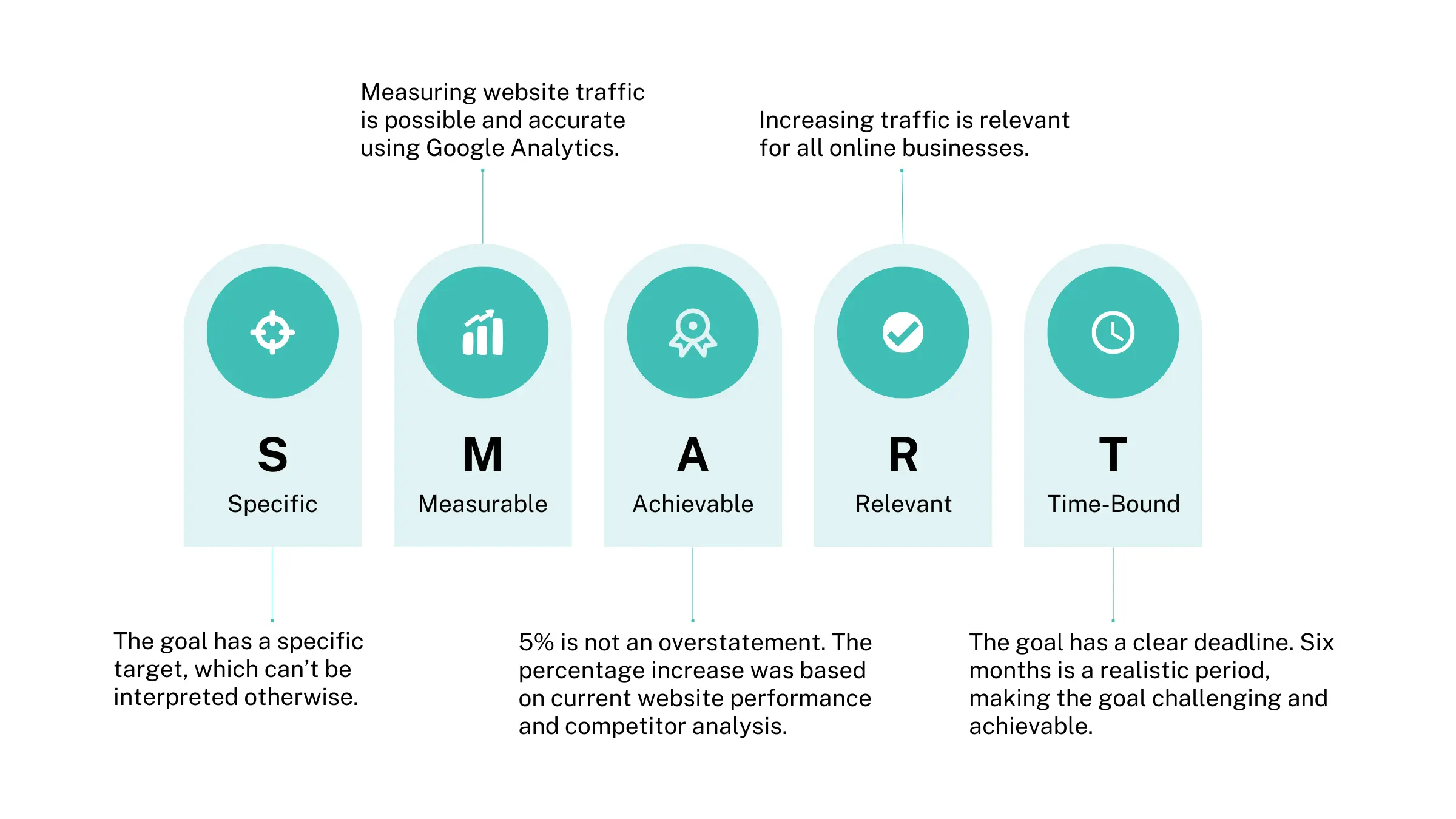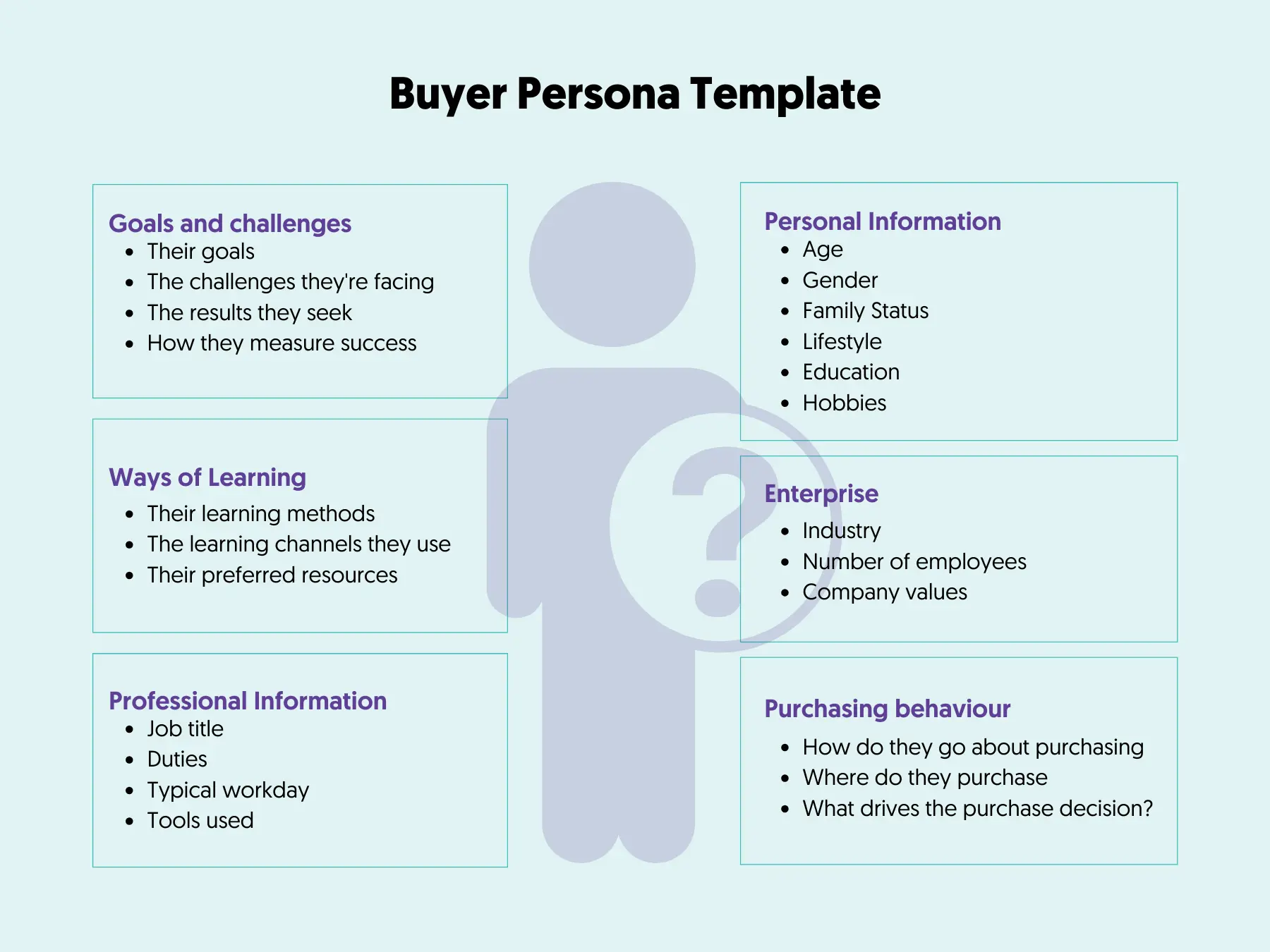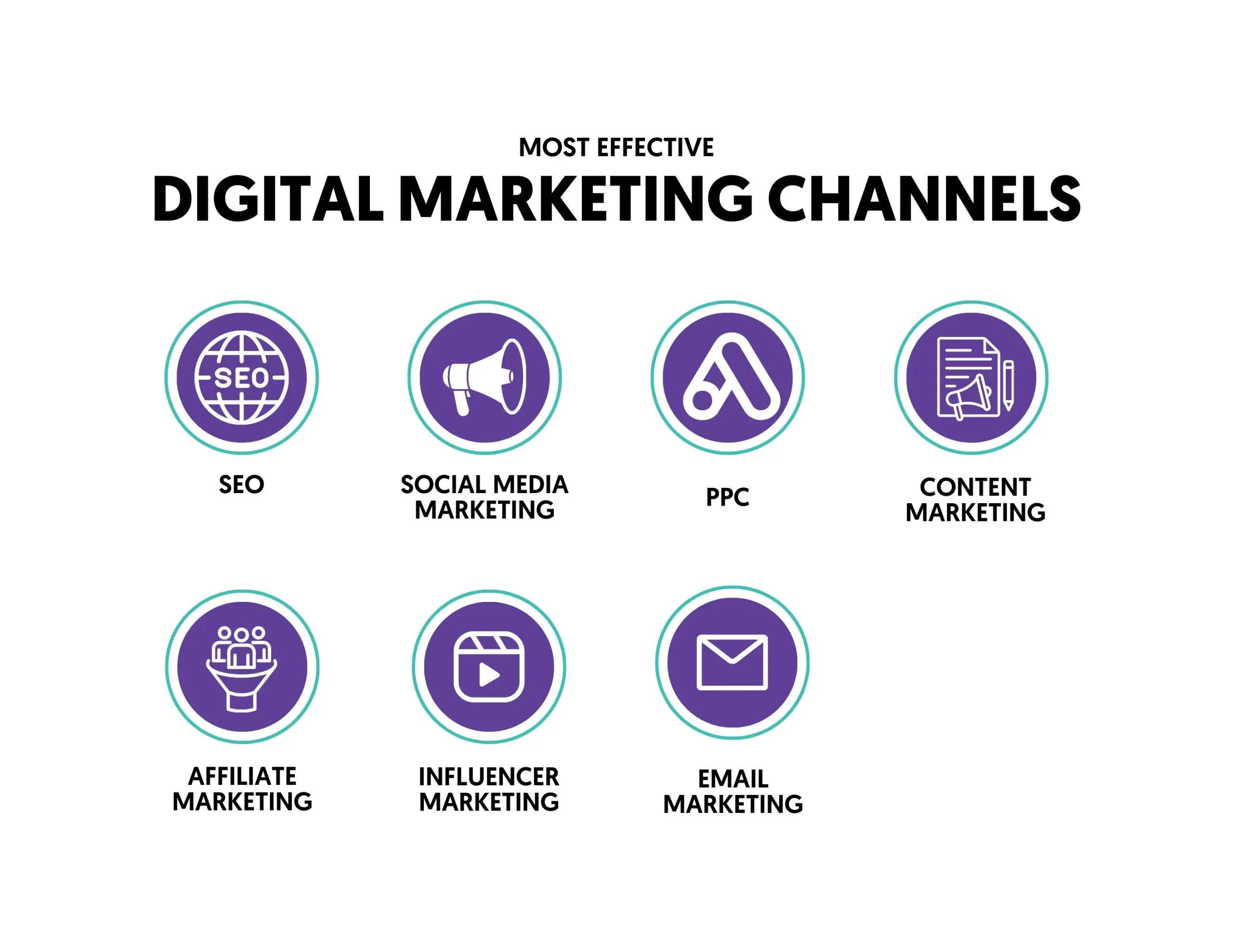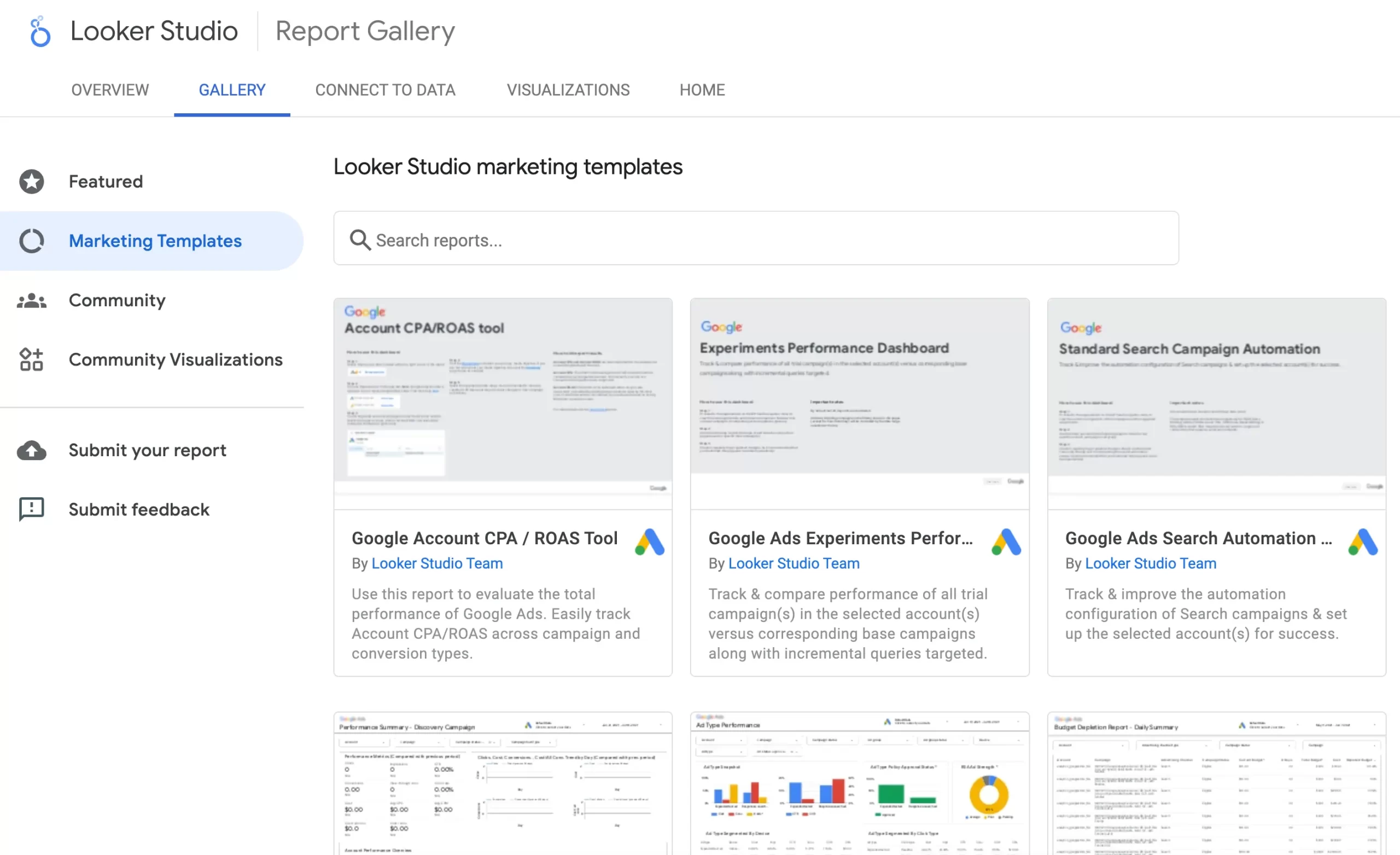In today's world, Digital marketing is the only way to increase your visibility on Google and social media networks and get valuable leads and clients for your business.
To make this happen, you must have a good and effective digital marketing plan that will account for all important aspects of online marketing, and this is exactly what you'll learn in this post.
What Is A Digital Marketing Plan?
A digital marketing plan is a document that describes in detail how to promote a company's products or services online. It outlines what techniques to use to connect with your target audience and which digital marketing channels to utilize to drive online traffic and increase conversions.
Here is a quick example to help you understand this better. John owns a SAAS company selling accounting software to B2B companies.
A digital marketing plan for his case will include things like:
- How to identify his target audience
- How to set SMART digital marketing goals
- An analysis of competitor's marketing strategies
- What channels to use to reach his audience
- What kind of content to publish on his website
- Which keywords to target with SEO
- Email campaigns to nurture and engage with potential customers
And other marketing tactics to help him achieve his business objectives.
Why Do You Need a Marketing Plan?
A digital marketing plan will outline the strategy, focus on the most important actions, and help you use your marketing efforts and money wisely. It will also ensure that your company can quickly adapt to any changes and stay ahead of the competition.
I always tell my clients and students that without a solid plan, it's like driving with your eyes closed. Don't underestimate the importance of creating a plan before starting your campaigns.
Let's see the steps to follow to make a good plan.
7 Steps To Create a Digital Marketing Plan
- Set Your Digital Marketing Goals and Objectives
- Define Your Target Audience and Build Buyer Personas
- Analyze Your Competitor's Strategies
- Choose Your Digital Marketing Channels
- Define Your Marketing Budget
- Create a Marketing Calendar & Execute Your Plan
- Monitor Results & Adjust Your Strategy
1. Set Your Digital Marketing Goals and Objectives
Before you do anything else, you should set long-term and short-term goals for what you want to achieve with digital marketing.
Any goal you define should be SMART (Specific, Measurable, Attainable, Relevant, and Time-Bound) and align with your business objectives.
For example, if your goal is to get more traffic to your website, you can set a long-term goal of increasing your traffic by 20% in 2 years. To achieve this goal, you should set short-term goals to increase your traffic by 5% in the next 6 months.

To align marketing goals with business objectives, think about what it takes to grow your business and set one or more goals to achieve that.
For example, if your business objective is to increase monthly revenue, you can translate that into the following marketing goals:
- Get more traffic from Google by ranking higher for these transactional [create a list] keywords.
- Optimize landing pages to increase conversion rate by 0.5%.
When setting goals, always look at your current performance and set challenging but realistic goals.
For more information, read: How to set digital marketing goals for long-term success.
2. Define Your Target Audience and Build Buyer Personas
The next step in crafting a winning plan is to define, in as many details as possible, who your target market is. I know from experience that this is a step many companies leave behind, believing they know their customers well.
Creating detailed buyer personas will help you uncover the unique characteristics of the different types of customers you should target in your campaigns.
For example, creating campaigns for young women with children differs from targeting single men. That's the beauty of digital marketing. You can use your buyer personas to set up sales funnels for each group and market them based on their interests and needs.
When creating buyer personas, you should gather information about your customers, including:
- Personal Information
- Professional Information
- Goals and Challenges
- Ways of Learning
- Purchasing Behavior
You can use our template below to get started.

3. Analyze Your Competitor's Strategies
When creating your digital marketing plan, you should closely examine your competitor's strategies, particularly SEO techniques and paid ads campaigns. The reason is simple: your digital marketing campaigns don't have to be perfect, but they need to be better than your competition's because this is how you'll win customers.
For example, to rank higher for a keyword in SEO, you don't have to create superb content—you just have to create better content than your top competitors.
Find out who your main competitors are, examine their market share, promotional strategies, and, in general, their online presence. Don't copy them, but get ideas and look for gaps in their marketing that you can exploit.
You can use the guides below to perform a competitor analysis.
- How To Find Your Competitor's Ads
- How To Find Competitor's Keywords
- How To Do An SEO Competitor Analysis
4. Choose Your Digital Marketing Channels
The next step is to specify which digital marketing channels you'll use in your campaigns. As mentioned above, you can set multiple goals (long-term and short-term) involving one or more marketing channels.

The most common types of digital marketing to use in your plan are:
- Search Engine Optimization (SEO)
- Social Media Marketing
- Pay-Per-Click Advertising (PPC)
- Content Marketing
- Email Marketing
- Affiliate Marketing
- Influencer Marketing
- Video Marketing
For each channel, you should set SMART goals and assign ownership to those responsible for the implementation. For example, if you work in a company with an in-house digital marketing team, you can agree with the SEO manager about the goals of SEO for next year and how these can be achieved.
5. Define Your Marketing Budget
When setting your marketing budget, it's important to consider various factors. Digital marketing packages cost a few hundred to several thousand per month if you outsource all your marketing.
Follow these tips to utilize your budget efficiently:
Allocate a portion of income on marketing: The first thing to decide is how much to spend on marketing. A higher percentage might be necessary for startups and businesses looking to grow aggressively, while a lower percentage for established businesses aiming for steady growth might be more appropriate.
Choose which services to outsource and what to do in-house: Outsourcing all your marketing to an agency will incur a higher cost than following a hybrid model. Some tasks (like posting content on your social media pages) don't require expertise. To save money, it's better to handle these tasks in-house and hire an agency or consultant for the tasks that require expert knowledge, such as ongoing SEO work and PPC management.
Allocate your budget to the channels that generate the highest ROI: In an ideal world, you could use all marketing channels to promote your business, but that's not the best approach. Run pilot campaigns on different channels to see what's working best, and then allocate your budget to the most profitable channels. From experience, these are likely to be SEO and Google Ads.
Start with a low budget and gradually increase it: Even if you can afford to spend more on particular campaigns, starting with a low budget is highly recommended. As a rule of thumb, you should keep spending money on a campaign as long as it generates a positive ROI. When you reach top performance, move your budget to other channels.
This is usually the case with Google and Facebook Ads. Allocate a low budget to give the system time to optimize your campaigns, and then gradually increase it until the CPA (cost per acquisition) is at acceptable levels. When the cost to get a lead or make a sale exceeds a certain threshold, it's time to spend money on other campaigns or channels.
6. Create a Marketing Calendar & Execute Your Plan
Once you gather all the information in your document, it's time to create a marketing calendar and set a date for each important task or campaign. Normally, you won't execute all actions at once. As noted above, your plan should include both short-term and long-term goals.
To stay organized, create a calendar and decide who will execute a task and when. Your plan should include specific dates to review your progress and adjust your strategy.
Remember to account for holidays and the time needed to prepare the necessary material for each campaign. This includes time-consuming tasks like creating content (blog posts and videos), researching, etc.
Once your calendar is ready, you've completed the first step in executing your digital marketing plan, but you should not stop there. It may sound unnecessary to stress this, but we've seen many companies fail to execute their plan.
The most common reasons were setting unrealistic goals and overestimating the return from paid campaigns, resulting in running out of budget faster than expected.
7. Monitor Results & Adjust Your Strategy
No marketing plan can be executed from start to finish without changes. I've been doing this for 20+ years and have never seen a campaign perform as originally planned. This means monitoring your campaigns regularly is crucial to your success.
You must track the right metrics and KPIs to monitor a campaign effectively. Each channel has its own set of important metrics you should track. For instance:
For SEO campaigns - you should track keyword rankings, website traffic, impressions, and organic CTR.
For PPC campaigns - you should track ad CTR, keyword quality score, impressions, and cost-per-click (CPC).
The above is just a small example. Read our digital marketing metrics post for a complete list of all KPIs and instructions on measuring them.
Here is a pro tip for you: To make data-driven decisions, you should try to gather all data in a single place, and Google Looker Studio (Free) is a great tool for this. Looker Studio can connect to several sources, including Google Search Console, Google Ads, and Google Analytics, and you can combine the data into meaningful reports and dashboards.
View the gallery of ready-made report templates to get started.

Example of a Digital Marketing Plan
Here is a short overview of how the above tips can be transformed into an actionable plan for a website selling dog food.
Step 1: Set Your Digital Marketing Goals and Objectives
- Improve website traffic, enhance brand visibility, and optimize conversion rates to increase online dog food sales by 30% within the next two years.
- Short-term objective: Increase website traffic by 15% through SEO and content marketing.
Step 2: Define Your Target Audience and Build Buyer Personas
- Buyer Persona: Dog Owners
- Personal Information: Pet owners aged 25-45. They value the health and well-being of their pets.
- Professional Information: Middle to upper-income professionals or families.
- Goals and Challenges: Looking for nutritious, convenient dog food options. Challenges include finding affordable, high-quality dog food.
- Ways of Learning: Social media, blogs, online reviews.
- Purchasing Behavior: Prefers shopping online, responsive to recommendations and loyalty programs.
Step 3: Analyze Your Competitor’s Strategies
- SEO Analysis: Identify the top three competitors with strong organic visibility for high-value keywords such as "organic dog food" and "best dog food brands."
- Content Gaps: Lack of comprehensive guides on dog nutrition and health which can be an opportunity to create value-added content.
- Social Media Presence: Competitors have moderate engagement rates, so there is an opportunity to create a more engaging, community-focused social media strategy.
Step 4: Choose Your Digital Marketing Channels
- SEO: Focus on content creation around high-value keywords and on-page SEO improvements.
- Content Marketing: Write pillar content on dog health and nutrition.
- Social Media Marketing: Post regularly on Instagram and Facebook, showcasing customer stories and behind-the-scenes videos on how our products are produced.
- Email Marketing: Monthly newsletters featuring exclusive promotions, nutritional tips, and new product launches.
Step 5: Define Your Marketing Budget
- Allocate 40% of the marketing budget to content creation and SEO optimization.
- 30% to social media advertising and influencer partnerships.
- 20% for email marketing tools and campaigns.
- 10% reserved for unforeseen opportunities and marketing tools.
Step 6: Create a Marketing Calendar & Execute Your Plan
- SEO: Publish bi-weekly blog posts. Begin on-page optimizations.
- Social Media: Host monthly live Q&A sessions with a veterinarian.
- Email Marketing: Send a weekly newsletter sharing new blog posts and exclusive discounts for subscribers.
- Content Marketing: Release a free eBook on dog nutrition.
- Social Media: Partner with dog influencers for product reviews.
Step 7: Monitor Results & Adjust Your Strategy
- SEO: Monitor keyword rankings and website traffic using Google Analytics.
- Social Media: Track engagement rates and follower growth.
- Email Marketing: Analyze open rates, click-through rates, and conversion rates.
Remember, success in digital marketing doesn't happen overnight. It requires constant monitoring, tweaking, and a deep understanding of your audience. Making a digital marketing plan is just the beginning.



